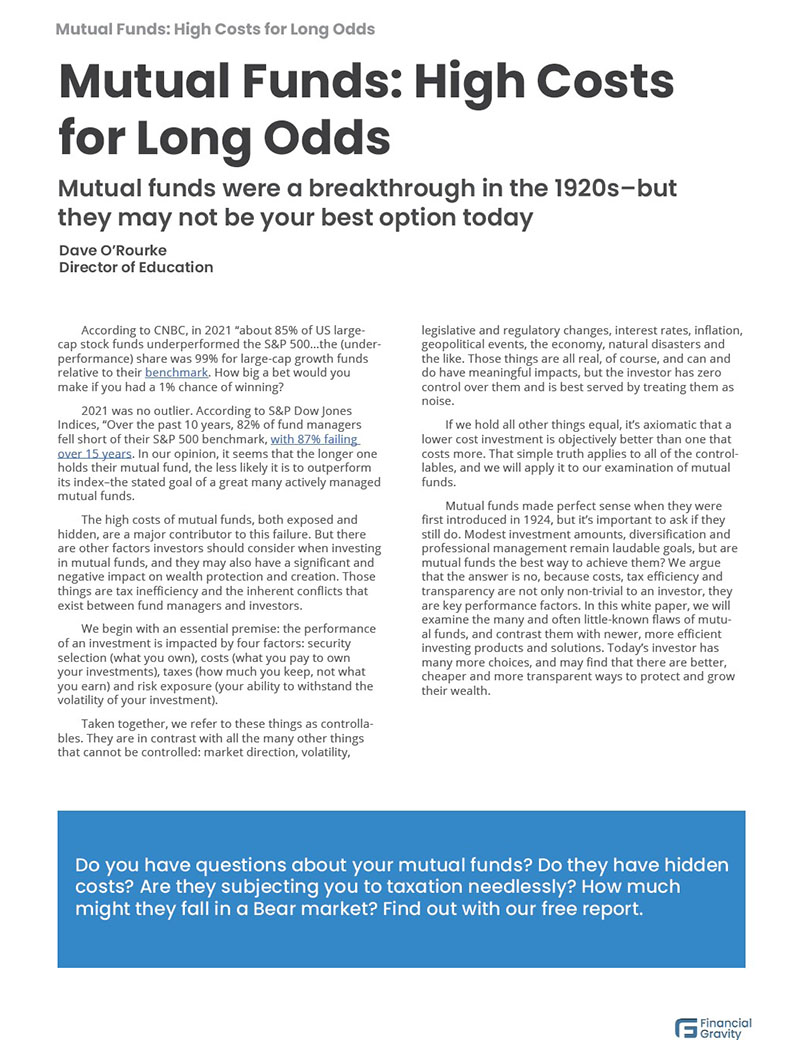Greedy When Others Are Fearful
There was a time, after World War II and before the turn of the Century, when Wall Street produced genuine stars. People like the legendary investor Peter Lynch, who captured the imagination of the entire nation, not just the gnomes in Lower Manhattan, with his Magellan Fund. Another such person was Joseph Ensign Granville; older readers might remember the name.
The decades between the ‘50s and the ‘90s were a time of imperfect information. For the great majority of that time, there was no internet and access to real-time pricing was limited. The emerging markets were a new kind of Wild West, with poorly regulated exchanges and widespread corruption. This was the heyday of the mutual fund, when managers could exploit inefficiencies and had a lot of leeway in their trading.
This was when all sorts of new methods were introduced, like technical trading, the use of signals, and charting. People had an abiding faith in statistics, believing that price and volume trends could be reliably exploited. You don’t see much of that anymore, at least outside the hedge fund types in Greenwich, Connecticut, and the reason for that is pretty simple: these techniques were terribly tax inefficient, and ultimately, they failed the reliability test.
When these kinds of theories were hot, Joe Granville was on top. He published the Granville Market Letter from 1963 to 2013, when he died at age 90. Joe developed the concept of “on-balance volume,” a predictive tool that said that price moves would follow increases in trading activity in a given stock or the broader market. It was what we now would call a timing strategy, and like virtually all timing strategies, it has largely gone out of favor.
Like Lynch and others, Granville had a real flair for self-promotion, and he understood that staying relevant meant making bold predictions. He is credited with some massive losses as well as some “right” calls. Whatever his ultimate legacy, he did coin a phrase that has real utility for investors today: “The stock market climbs a wall of worry.” It’s worth some examination.
The phrase is a metaphorical explanation of the seeming paradox that the market can (and often has) continue to rise even during periods of economic uncertainty and geopolitical risks. It also offers an explanation for market tops: according to the theory, bull markets end when there are no more worries, and the fever to buy, fuelled by FOMO, takes over.
It seems very likely to be a useful explanation for that U-shaped curve of investor success. As worries dissipate and retail investors come to believe the market will rise forever, money flows in until prices reach unsustainable and irrational levels, which leads institutional investors to take their winnings, reduce their risk, and bail out. The selling pressure builds, and eventually, panic selling begins.
Warren Buffet reworked Granville’s oracular sentiment with his own famous utterance: “Be greedy when others are fearful, and be fearful when others are greedy.” Many consider this to be the single most sagacious piece of advice ever offered to investors, and you can see its roots in Granville’s pronouncement.
Welcome to the Silly Season
It’s June, the traditional start of Summer in America. Pools open, boats go back in the water, sunscreen sales enjoy their seasonal spike, and, in an election year, the silly season begins. The period between Memorial Day and Labor Day is a time when politicians test out their campaigns and search for the winning message and platform. Look for candidates at a state fair near you.
Silly seasons always seem to lack some sort of genuine gravitas, at least partly because they are driven by a clickbait-obsessed media peddling outrage. Most Americans can see through that, but this year, there really is a lot to worry about. Americans are very concerned about real-life economic problems, like inflation, real wages, and the economy. Also on the list are healthcare, housing affordability, job security due to artificial intelligence and globalization, immigration, ballooning debt, and national security. It’s quite a list, and we doubt anyone could say that our worries are over.
That’s a lot to worry about, but in truth, it’s in no way unusual. Expect to hear the quadrennial refrain, “This is the most important election in our history!” It may be tiresome, but there is a grain of truth in it: what we decide in November may affect our future in meaningful ways. Or not—the markets enjoyed robust gains in ‘13, ‘17, and ‘21, and those elections were pretty ugly.
According to the Motley Fool, we’ve been in a bull market for over a year and a half. The S&P 500 was up over 26% last year (total return) and is up over 13% as of June 12, 2024. Given the news cycles during that period, the market has had a lot of worries to climb over: Ukraine, the Middle East, supply chains, inflation, energy transition, and much more.
We hesitate to make light of the episodic market crashes, which create anti-FOMO sentiment and destroy huge amounts of wealth, even if only temporarily. While retail investors burn to pour cash into markets at the top, they frantically sell after the damage is done. As we’ve written many times before, this buy high/sell low trap offers a perfect explanation for the U-shaped performance graph.
Over the past 100 years, the market has taken some massive blows: the Great Depression, the post-WWII recession, Black Monday, and the Great Recession, to name a few. Despite all that, the market has grown exponentially over that period, doubling almost 14 times. $100,000 invested 100 years ago, growing at 10% (the S&P’s historical return), would be worth $1.378,061,234 today. After a 4% inflation rate, it would still be worth $33.93 million in 1924 dollars.
No Reason for FOMO
One hundred years obviously exceeds the investing lifetime of any of us, but it does inform the power of compounding. Here’s another stat that may do that for you: 99% of Buffett’s wealth was created after his 65th birthday.
Patience and discipline are the keys to investing success. The folks on the right side of the U-shaped curve have those things. Generally speaking, those on the left do not. There are other factors, of course, because what you make doesn’t matter; only what you keep matters. Costs, taxes, and risk exposure all have an impact—and all can be controlled.
It’s difficult to be sanguine, let alone grateful, for economic, financial, and political uncertainty, but if those things prevent the market from overheating, the result—an extended bull market—may well be worth it. If you’re in the market, and you’re patient, and you can control your controllables, you almost certainly won’t miss out.


